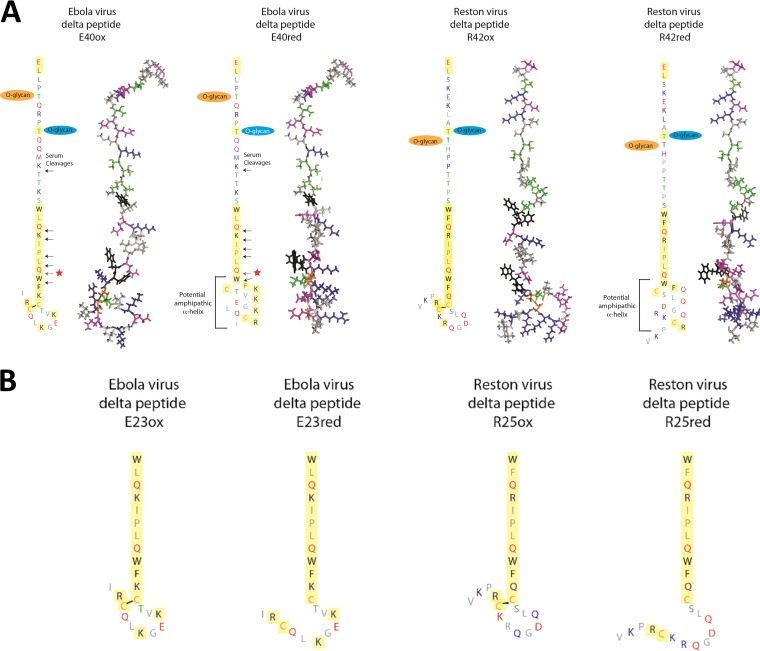FIG 2.
Schematic representations of filovirus delta peptides. (A) Full-length Ebola virus delta peptide (left two structures) is a 40-residue peptide that is cleaved from the soluble glycoprotein during processing. The delta peptide is glycosylated near the N terminus. The C-terminal 23 residues (yellow) are well conserved among related viruses. This C-terminal domain could form amphipathic structures as a disulfide cross-linked hairpin (left structure of each pair) or as an amphipathic helix (right). The Reston virus delta peptide, (right two structures), which is 42 residues long, has similar properties. Observed sites of cleavage by serum proteases are indicated by arrows, with the starred red arrow designating the 15-residue C-terminal fragment that remains intact even after 24 h at 37°C in serum. (B) The 23-residue Ebola virus peptide and 25-residue Reston peptide fragments that represent the more conserved C-terminal half of the peptide. These peptides retain the activity of the full-length peptide when oxidized.

